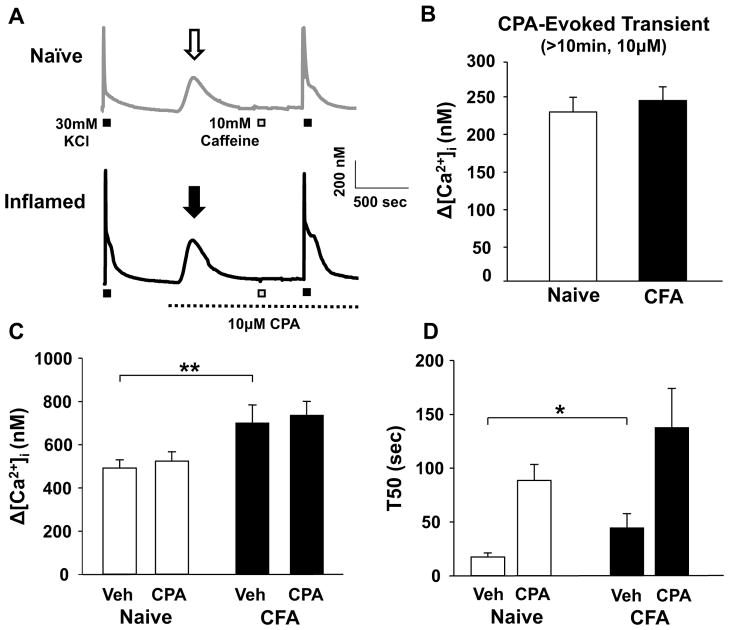Figure 6.
No inflammation-induced change in the influence of SERCA on the high K+-evoked transient. A) Ca2+ transients in neurons from a naïve (grey trace) and inflamed (black trace) rat evoked with high K+ before and after the application of CPA. Both neurons were challenged with caffeine to confirm depletion of Ca2+ from intracellular stores. B) The magnitude of the CPA-evoked Ca2+ transient was comparable in neurons from naïve (n = 11) and inflamed (n = 9) rats. C) CPA had no influence on the magnitude of the high K+-evoked Ca2+ transient, despite a significant main effect associated with inflammation (two-way ANOVA). Pooled data are responses obtained before (Veh) and after application of CPA. D) The decay of the high K+-evoked Ca2+ transient was calculated, pooled and plotted as in C. There were significant main effects associated with CPA and inflammation but no statistically significant interaction (two-way ANOVA). * p < 0.05; ** p < 0.01.

